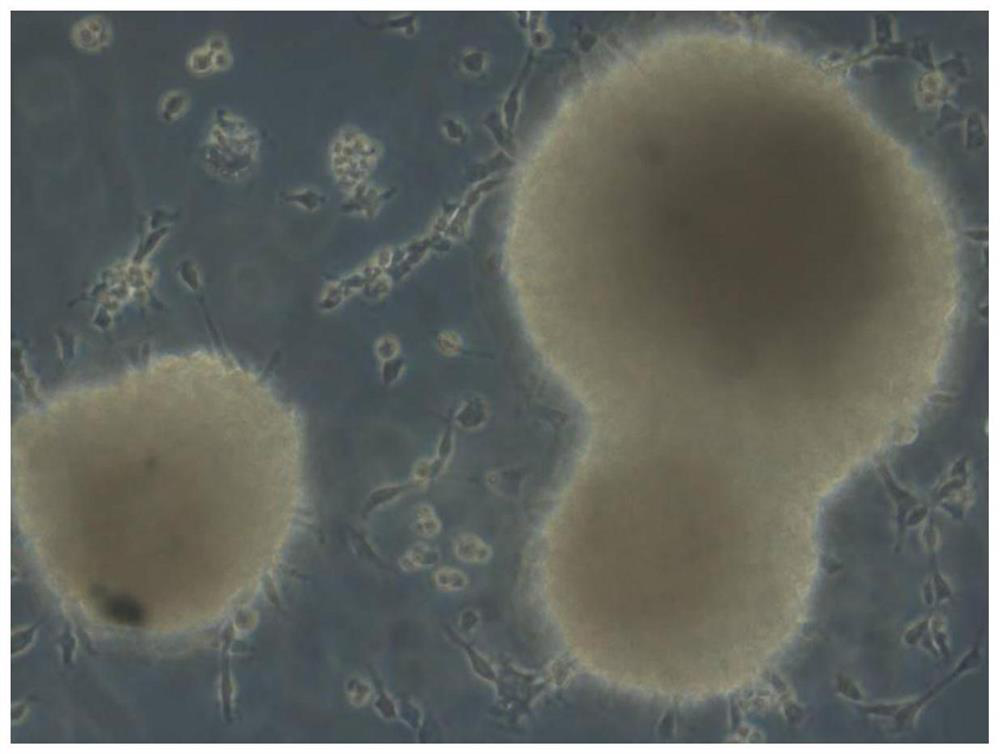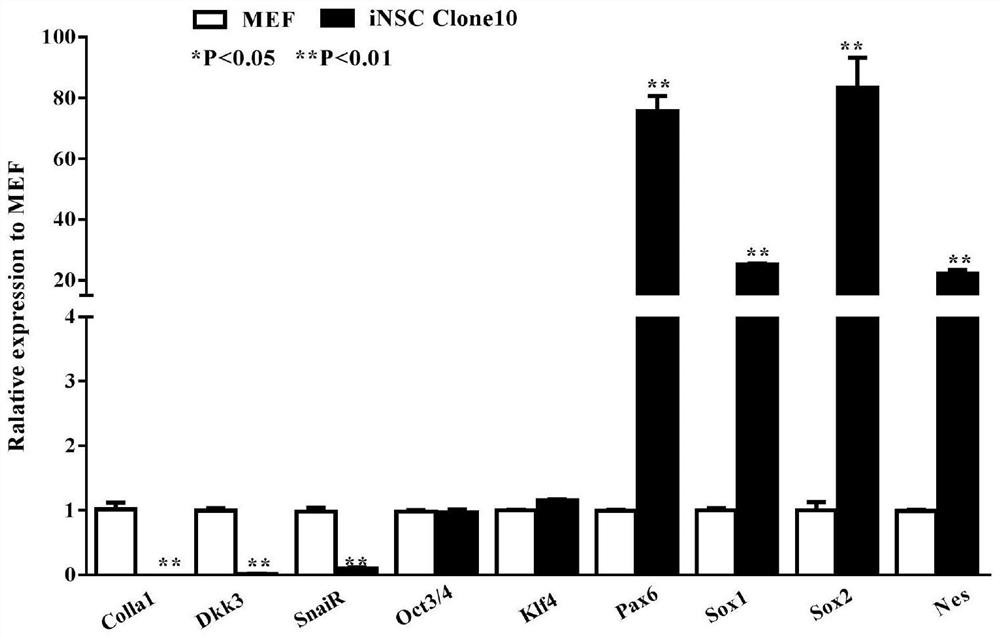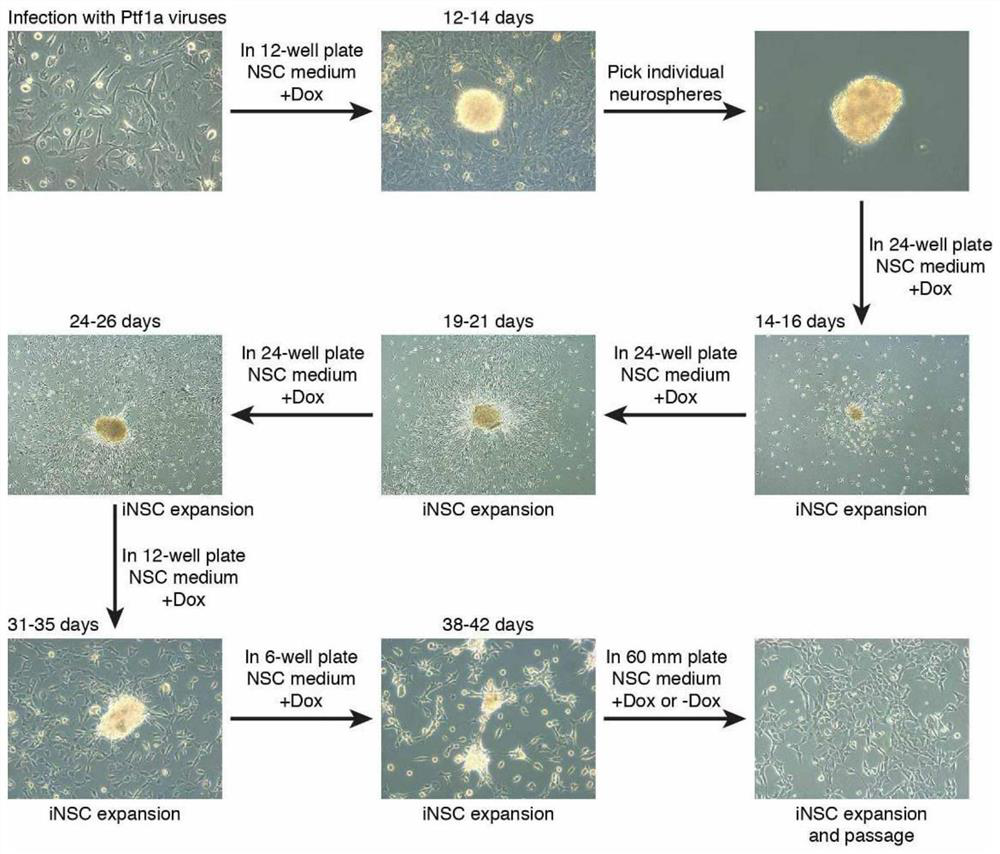A method for inducing human or animal somatic cells into neural stem cells
A neural stem cell and cell induction technology, which is applied in the field of inducing human or animal somatic cells into neural stem cells, can solve the problems of safety and hidden dangers of transcription factors, and achieve the effect of application safety
- Summary
- Abstract
- Description
- Claims
- Application Information
AI Technical Summary
Problems solved by technology
Method used
Image
Examples
Embodiment Construction
[0047]The following examples are a further detailed description of the present invention.
[0048]The specific process and details of the present invention will be described in detail below with "Ptf1a lentivirus transdifferentiating fibroblasts into iNSCs" as an example.
[0049](1) Construction of lentiviral vector (Tet-O-FUW-Ptf1a)
[0050]The mouse Ptf1a (NM_018809.2, 972bp) coding sequence was cloned into a lentiviral vector (Tet-O-FUW) containing tet-on regulatory sequence. The purpose is to co-transfect with RTTA virus in the future and add Dox (Doxycyclin) to control the expression of Ptf1a in somatic cells. After the correct clone was verified by DNA sequencing, the plasmid for transfection was prepared.
[0051](2) Preparation of lentivirus
[0052]1) 24 hours before plasmid transfection, spread 4.0x10 in a 10cm cell culture dish6HEK293T cells were cultured by adding 6ml MEF medium.
[0053]2) Before transfection, remove the original medium and replace it with 9ml fresh pre-warmed MEF mediu...
PUM
 Login to View More
Login to View More Abstract
Description
Claims
Application Information
 Login to View More
Login to View More - R&D
- Intellectual Property
- Life Sciences
- Materials
- Tech Scout
- Unparalleled Data Quality
- Higher Quality Content
- 60% Fewer Hallucinations
Browse by: Latest US Patents, China's latest patents, Technical Efficacy Thesaurus, Application Domain, Technology Topic, Popular Technical Reports.
© 2025 PatSnap. All rights reserved.Legal|Privacy policy|Modern Slavery Act Transparency Statement|Sitemap|About US| Contact US: help@patsnap.com



